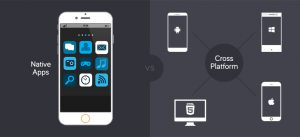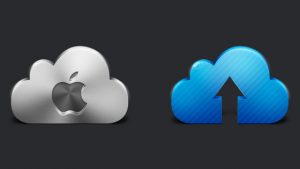Have a million-dollar idea for the next great app? Well, slow down — there’s a lot of work ahead! Here are ten important steps to streamline the app development process.
1. Focus on the problem that your app solves

If everybody is your customer, then nobody is your customer.
People don’t have the same problems, so when you’re mapping out the problem that your app will solve you also need to keep in mind who your target customer will be.
A popular strategy for defining your target customer is developing a fictional avatar. Developing your avatar involves identifying the goals, values, demographics, challenges, pain points, favorite books/websites/magazines, and even the hobbies of your ideal customer.
Thoroughly developing your avatar will benefit you in the long run when identifying the problem your app will solve and the audience it will serve.
Once you’ve defined your avatar, invest all your capital into building an app for them and spend all your time determining how to solve their problem better than anybody else on the market.
2. Keep the UI simple and focused on the problem

When you’re in touch with your target user and their problem, focusing on a simple UI that serves that user will be easy.
Plan out typical use cases and understand how users will interact with the app’s interface.
Tinder demonstrates a great approach to the user interface. Tinder’s interface is easy use to use: swipe side to side and up or down on photos. That’s it.
Tinder defined the type of users they wanted to attract, thought about how those users would interact with their interface, and designed the interface to cater to their users’ needs in a simple way.
3. Choose your approach – native or cross-platform

There’s no right or wrong answer when deciding between native and cross-platform development. Each approach meets different needs.
If you’re on a tight budget, need to rush out the app, or want to serve a larger audience across app marketplaces, then cross-platform development may be best for you.
On the contrary, if you have time to spare and money to spend, you can benefit from native app development. Native development can provide greater functionality and an improved user experience because the app is developed for each platform individually.
4. Integrate analytics

The creatives hate to admit it, but we’re nothing without our data and analytics.
Finding the right tool for your app’s analytics plays an important role in the success of the launch and beyond.
Understanding how users interact with your app, the types of visits that occur, and how the market reacts to your app is important when planning marketing and sales strategies.
Certain analytics tools may be more beneficial than others for specific types of apps, but some key features to look for are heatmaps, in-app analytics, and automatic detection of UI problems so that you can take corrective actions.
5. Define metrics to capture

Once you’ve found the perfect analytics tool to track your data, the next step is to identify the right metrics.
Some important metrics to consider when analyzing app performance are:
- Average session length — the average time spent in your app per session
- Daily/monthly active users
- Retention rate — the ratio of users who return to the app again out of total users
- Stickiness — the ratio of daily active users to monthly active users
Never overlook the data and always trust analytics to give you insights into app performance.
6. Release quickly

Rushing a product to market is never a good idea, but neither is spending too much time to develop one.
Identifying a minimum viable product (MVP) and getting it through the development process is a proven way to fast-track product development. An MVP allows developers to provide a product to deliver to customers while giving the analytics team data to work with for future updates.
After developing a minimum viable product, an app will move along faster and be ready for a beta test launch.
7. Beta test your app

The beta test is very important to the entire app development lifecycle. A beta launch allows the app to reach the market, attract customers, and begin collecting user data.
Data collected from the beta test will provide development teams with insights into problems the app may be experiencing and allow for quickly optimizing app performance to move toward building an even better app for the next launch.
Understanding that a beta test serves as a way to provide continuous integration and improvement is essential.
Trying to be too perfect right away is not the best strategy.
8. Ask for help if you’re not an app pro

You can’t create, develop, and launch an app successfully on your own.
Find people who have experience and know how to make things happen. If you don’t have all the answers, build a team that can find all the answers. If it’s your first app, hiring someone experienced to build it is a good choice. If you’ve never had experience planning interface, testing app, bringing it to the market, better find an experienced development team with some relevant app samples in their portfolio. But if you just have a few questions, you still may ask for short consultancy. That’s where we come in. Let us know if we can help
9. Keep collecting feedback after release

Your release is far from the end of the process. It’s a proud moment, so pat yourself on the back — but then move on, because the real challenges lie ahead.
Use your launch as a chance to build a community around your app that welcomes feedback and gathers opinions for how to improve your app.
As you get more familiar with the market and what customers are looking for, you’ll notice how fast your team is able to make updates and improvements to meet those needs.
10. Keep asking yourself: Why will users keep using my app?

Never get complacent. Your team needs to always test new strategies and listen to the market to keep up with trends.
Ask yourself: Why will users keep using my app?
If you have trouble answering this question, go back to step one and try to see what you’ve missed.
The answer to this question will roll off your tongue if you’re in tune with your purpose and understand your audience better than you understand yourself.

